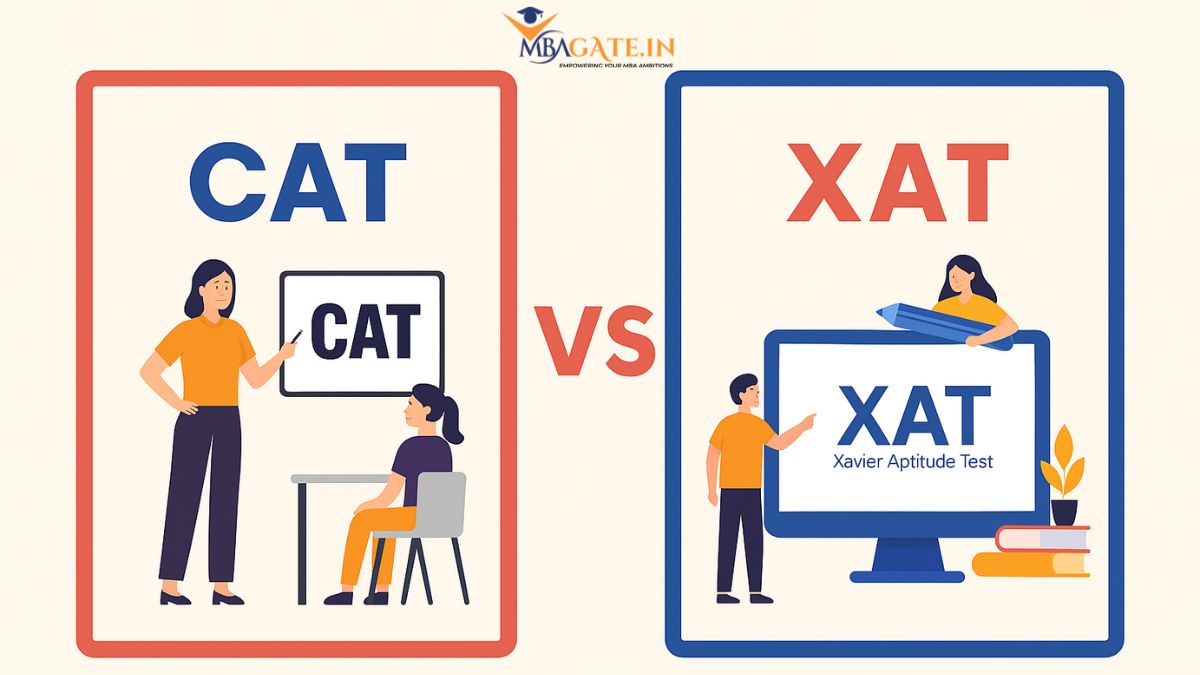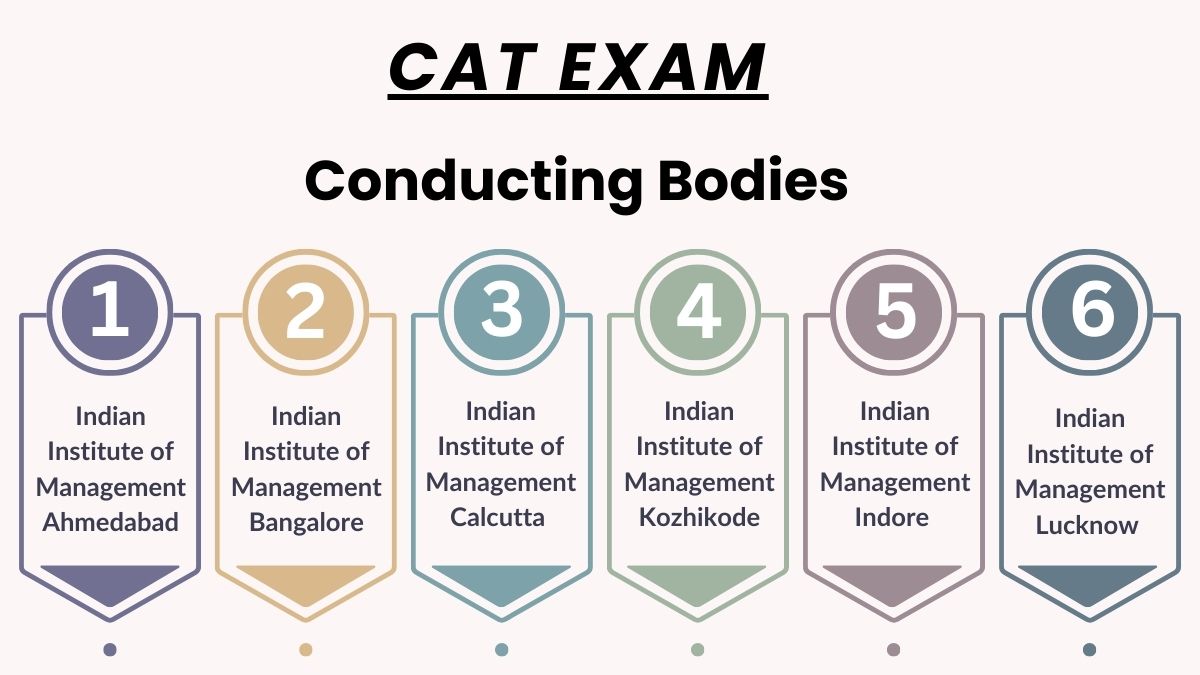Key Differences Between CAT and XAT Exams
Table of Content
-
- + more items Show less
Knowing about PGP, PGDM and MBA
Both management education and start-ups are becoming increasingly popular in the nation. These days, students are eager to launch their own businesses or work in the corporate sector. The Master of Business Administration (MBA), Post Graduate Programme in Management (PGP-M) and Post Graduate Diploma in Management (PGDM) are three of the most crucial programmes to pursue after graduation. Students must score well on the major MBA entrance exams including the CAT, XAT, GMAT, CMAT and many others, in order to gain admission to the top management schools. The majority of prestigious colleges accept CAT or XAT scores, with a few exceptions such as Indian School of Business Hyderabad and Mohali, Symbiosis Institute of Business Management (SIBM) and Narsee Monjee Institute of Management Studies (NMIMS).

What are CAT and XAT?
The two most important management entrance exams in the nation for admission to the best MBA schools, such as the Indian Institutes of Management (IIMs), the Indian Institute of Technology for their MBA programmes, XLRI and many more are the Common Admission Test (CAT) and the Xavier Aptitude Test (XAT). As a result, when a management candidate starts preparing for an MBA, they often question whether the CAT or the XAT is more crucial. The most frequently asked questions concern the degree of difficulty, the parallels and discrepancies in their syllabus and whether or not they should study independently for the two tests. Which colleges accept CAT or XAT scores is another important question.
This article answers all of the questions about this subject.
Main features of CAT and XAT:
The table below contains details about the CAT and XAT exam dates, conducting bodies, starting year, eligibility criteria and exam fees.
Exam Patterns of CAT and XAT:
The table below lists the differences between the CAT and XAT's sections, length and marking scheme:

Which exam is easy and which is difficult, CAT or XAT?
The following table lists the difficulty level of the CAT and XAT exams as well as their respective sections:
Colleges accept CAT, XAT or both scores:
The information for colleges that accept CAT, XAT, and both CAT and XAT scores is shown in the following table:

Experts' opinions on the difficulty level of CAT and XAT
Considering the three sections of the CAT and the three sections of Part 1 of the XAT (as general knowledge in Part 2 of the XAT is not considered in percentile calculation and is only applicable to the XLRI section process), the following conclusion can be reached.
1. When comparing CAT's VARC (Verbal Ability and Reading Comprehension) to XAT's VA&LR (Verbal Ability and Logical Reasoning) most experts agree that XAT's VA&LR is more difficult than CAT's VARC.
This difference arises because the CAT is administered by the IIMs, which are government-funded autonomous institutes. These institutes attempt to bridge the gap between schools with advanced English curricula and those with foundational grammar education. However, students with a strong English background will benefit more from the XAT's VA&LR section.
2. When comparing the Quant and DILR sections of the CAT to the Quant section of the XAT (which includes both quant and DI) it is clear that this section of the XAT is easier than the CAT's Quant and DI. This section of the XAT is suitable for aspirants who lack advanced mathematical and intensive calculation skills.
The Quant Section in XAT requires more analytical thinking than the CAT. The questions asked in the XAT cannot be classified into a specific topic and there is no hard and fast rule for determining the solution. For candidates who do not know the formula but have strong analytical thinking skills XAT is a better option. Many experts believe that XAT is a better exam for smart test takers.
3. The decision-making section of the XAT is a make-or-break section (there is no such section in the CAT) and is considered quite difficult because it assesses aspirants' ability to solve problems that arise in the workplace.
Such questions are uncommon elsewhere so there is not much of a question bank available aside from the previous year's XAT questions.
Conclusion
After reviewing the information presented above, it is impossible to say which exam is easier or more difficult between the CAT and XAT but the following conclusions can be drawn:
The VA and LR sections of the XAT are more difficult than CAT's VARC.
XAT's Quant section is easier than the CAT's Quant and DI.
DILR of CAT and decision-making of XAT are make-or-break sections.
CAT scores are accepted by more prestigious colleges than XAT.
The XAT exam is better suited to those with a higher English standard than Quant and the opposite is true for the CAT.
FAQs
CAT awards 3 marks for every correct answer and -1 for every incorrect answer with four options given for each question except TITA questions, whereas XAT awards 1 mark for every correct answer and -0.25 for every incorrect answer except GK section with five options given for each question. XAT also deducts -0.1 marks for each unattempted question after 8 unattended questions.
The CAT lasts 120 minutes with 40 minutes allotted to each of the three sections: Verbal Ability & Reading Comprehension (VARC), Data Interpretations & Logical Reasoning (DILR) and Quantitative Ability (QA) whereas the XAT lasts 180 minutes with 10 minutes for GK and 170 minutes for the other three sections: Verbal Ability and Logical Reasoning (VA&LR), Decision Making (DM) and Quantitative Ability & Data Interpretation (QA&DI). XAT allows switching between three sections except GK, whereas CAT does not.
The XAT's GK section has 20 questions and 10 minutes to answer them, 8 of which are static GK and the remaining 12 are current affairs-based. The General Knowledge section is only considered for the XLRI selection process in the PI round, as it is not used to calculate percentiles.
The XAT has four sections: Verbal Ability and Logical Reasoning (VA&LR), Decision Making (DM) and Quantitative Ability and Data Interpretation (QA&DI) as well as a separate General Knowledge section, whereas the CAT has three sections: Verbal Ability and Reading Comprehension (VARC), Data Interpretations and Logical Reasoning (DILR), and Quantitative Ability (QA).
Overall both exams are rated moderate to difficult; however the XAT's verbal and CAT's quant are more difficult with XAT's decision-making and CAT's data interpretation and logical reasoning being unpredictable.
For both examinations,, one must have passed or be pursuing graduation from a recognised college or university. For CAT, a minimum of 50% marks is required with 45% for SC/ST, PwD and DA candidates. For XAT, there is no limit on percentage marks.









